-
 Bitcoin
Bitcoin $107,631.9817
-1.73% -
 Ethereum
Ethereum $2,739.1787
-4.61% -
 Tether USDt
Tether USDt $1.0000
-0.01% -
 XRP
XRP $2.2427
-3.30% -
 BNB
BNB $664.0527
-0.73% -
 Solana
Solana $158.0902
-5.38% -
 USDC
USDC $0.9998
-0.01% -
 Dogecoin
Dogecoin $0.1876
-7.78% -
 TRON
TRON $0.2753
-3.21% -
 Cardano
Cardano $0.6820
-5.55% -
 Hyperliquid
Hyperliquid $43.0171
-0.38% -
 Sui
Sui $3.3308
-4.87% -
 Chainlink
Chainlink $14.3431
-7.89% -
 Avalanche
Avalanche $21.0266
-6.48% -
 Bitcoin Cash
Bitcoin Cash $437.7657
-1.56% -
 Stellar
Stellar $0.2746
-2.52% -
 UNUS SED LEO
UNUS SED LEO $8.8665
-1.96% -
 Toncoin
Toncoin $3.1885
-3.37% -
 Shiba Inu
Shiba Inu $0.0...01260
-6.84% -
 Hedera
Hedera $0.1686
-4.93% -
 Litecoin
Litecoin $88.8406
-5.16% -
 Polkadot
Polkadot $4.0542
-6.28% -
 Monero
Monero $322.5806
-4.20% -
 Ethena USDe
Ethena USDe $1.0004
-0.02% -
 Bitget Token
Bitget Token $4.7089
-3.10% -
 Dai
Dai $0.9998
-0.01% -
 Pepe
Pepe $0.0...01206
-9.06% -
 Uniswap
Uniswap $7.8694
-5.20% -
 Pi
Pi $0.6232
-2.68% -
 Aave
Aave $301.3815
-3.83%
What is the significance of SAR indicator approaching price? How to confirm the breakthrough signal?
When the SAR indicator approaches the price, it signals a potential trend reversal; traders should confirm with additional indicators and volume for a breakthrough signal.
Jun 10, 2025 at 01:35 am
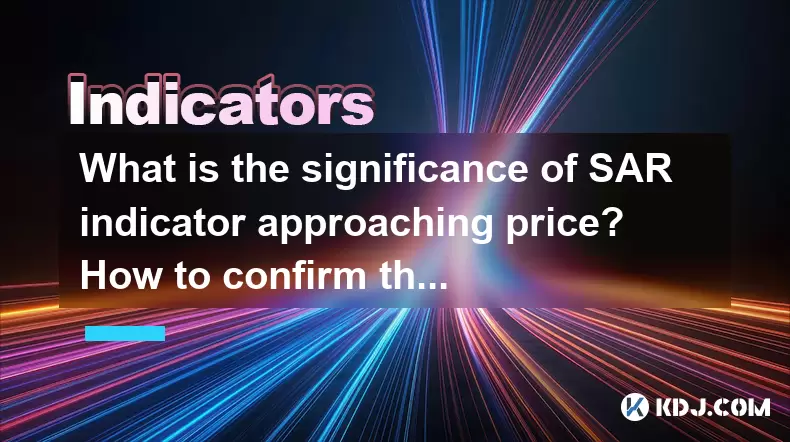
The SAR (Stop and Reverse) indicator, also known as the Parabolic SAR, is a popular technical analysis tool used by traders to determine potential reversals in the price direction of an asset. When the SAR indicator approaches the price, it can signal a potential change in the trend, making it a crucial moment for traders to watch. In this article, we will delve into the significance of the SAR indicator approaching the price and provide a detailed guide on how to confirm a breakthrough signal.
Understanding the SAR Indicator
The SAR indicator is designed to provide entry and exit points for traders. It appears as a series of dots placed either above or below the price chart. When the dots are below the price, it suggests an uptrend, and when they are above the price, it indicates a downtrend. The significance of the SAR indicator approaching the price lies in its potential to signal a trend reversal.
When the SAR indicator begins to approach the price from below in an uptrend or from above in a downtrend, it suggests that the current trend may be losing momentum. This proximity can be a warning sign for traders to prepare for a potential reversal. The closer the SAR indicator gets to the price, the more imminent the potential reversal becomes.
Significance of SAR Indicator Approaching Price
The SAR indicator approaching the price is significant because it can indicate a weakening trend. For instance, if the price is in an uptrend and the SAR dots start to move closer to the price from below, it may signal that the bullish momentum is fading. Conversely, in a downtrend, if the SAR dots approach the price from above, it could indicate that the bearish momentum is waning.
This proximity can serve as an early warning for traders to adjust their positions. It is a critical juncture where traders need to closely monitor other technical indicators and market conditions to confirm whether a trend reversal is likely to occur.
Confirming a Breakthrough Signal with SAR Indicator
Confirming a breakthrough signal when the SAR indicator approaches the price involves several steps. Here is a detailed guide on how to do it:
Monitor the SAR Indicator: The first step is to keep a close eye on the SAR indicator. If the dots are approaching the price, it's time to prepare for a potential trend change.
Use Additional Indicators: To confirm the signal, use additional technical indicators such as the Moving Average Convergence Divergence (MACD), Relative Strength Index (RSI), or Bollinger Bands. For example, if the MACD shows a bearish divergence while the SAR dots are approaching the price from above, it strengthens the case for a potential downtrend reversal.
Watch for Price Action: Look for specific price action patterns such as candlestick formations that could indicate a reversal. For instance, a bearish engulfing pattern in a downtrend with the SAR dots approaching from above can be a strong confirmation signal.
Check Volume: Volume is a crucial factor in confirming a breakthrough. An increase in trading volume as the SAR indicator approaches the price can validate the potential reversal signal.
Set Stop-Loss and Take-Profit Levels: Once the breakthrough is confirmed, set appropriate stop-loss and take-profit levels to manage risk and lock in profits.
Practical Example of SAR Indicator Approaching Price
To illustrate the process, let's consider a practical example. Suppose you are monitoring a cryptocurrency chart, and you notice that the SAR dots are approaching the price from below during an uptrend.
Step 1: You observe the SAR dots getting closer to the price, indicating a potential weakening of the uptrend.
Step 2: You check the MACD and notice a bearish divergence, suggesting that the bullish momentum is indeed fading.
Step 3: You look at the candlestick chart and spot a bearish engulfing pattern, which further confirms the possibility of a trend reversal.
Step 4: You check the trading volume and see an increase, which supports the likelihood of a reversal.
Step 5: Based on these confirmations, you decide to enter a short position, setting a stop-loss just above the recent high and a take-profit at a level where you anticipate the price to reverse to.
Common Mistakes to Avoid
When using the SAR indicator to confirm a breakthrough signal, it's important to be aware of common mistakes that traders often make:
Ignoring Additional Indicators: Relying solely on the SAR indicator without confirming with other technical tools can lead to false signals.
Overlooking Volume: Volume is a critical confirmation factor, and neglecting it can result in misjudging the strength of the signal.
Not Setting Proper Risk Management: Failing to set stop-loss and take-profit levels can expose traders to unnecessary risk.
Reacting Too Quickly: Acting on the SAR indicator approaching the price without waiting for additional confirmations can lead to premature entries and exits.
Enhancing SAR Indicator Analysis with Other Tools
To enhance the analysis of the SAR indicator approaching the price, traders can incorporate other tools and strategies:
Trend Lines: Drawing trend lines can help identify the overall direction and strength of the trend. A break of a trend line in conjunction with the SAR indicator approaching the price can provide a strong confirmation of a trend reversal.
Fibonacci Retracement Levels: Using Fibonacci retracement levels can help identify potential support and resistance levels. If the SAR indicator approaches the price near a key Fibonacci level, it can increase the confidence in the potential reversal.
Chart Patterns: Recognizing chart patterns such as head and shoulders, double tops, or double bottoms can complement the SAR indicator's signals. A bearish chart pattern forming as the SAR dots approach the price from above can reinforce the likelihood of a downtrend reversal.
Timeframes: Analyzing the SAR indicator across different timeframes can provide a more comprehensive view. If the SAR indicator approaches the price on both shorter and longer timeframes, it can strengthen the signal.
FAQs
Q1: Can the SAR indicator be used effectively on all timeframes?
A1: Yes, the SAR indicator can be used on various timeframes, from short-term intraday charts to longer-term weekly or monthly charts. However, its effectiveness may vary depending on the asset and market conditions. It's crucial to combine the SAR indicator with other tools and adjust the settings according to the timeframe being analyzed.
Q2: How often should the SAR indicator be recalculated?
A2: The SAR indicator is typically recalculated with each new price bar or candlestick. Most trading platforms automatically update the SAR dots as new data comes in. However, traders can also manually adjust the SAR settings, such as the acceleration factor, to suit their trading strategy and the specific asset they are analyzing.
Q3: Is the SAR indicator suitable for all types of traders?
A3: The SAR indicator can be useful for various types of traders, including day traders, swing traders, and position traders. However, it is particularly beneficial for trend-following strategies. Traders who prefer range-bound or mean-reversion strategies may find the SAR indicator less effective, as it is primarily designed to identify trend reversals.
Q4: Can the SAR indicator be used in conjunction with fundamental analysis?
A4: While the SAR indicator is a technical analysis tool, it can be used alongside fundamental analysis to enhance trading decisions. For instance, if the SAR indicator signals a potential reversal and this aligns with significant fundamental developments, such as regulatory news or macroeconomic events, it can provide a more robust trading signal. Combining technical and fundamental analysis can help traders make more informed decisions.
Disclaimer:info@kdj.com
The information provided is not trading advice. kdj.com does not assume any responsibility for any investments made based on the information provided in this article. Cryptocurrencies are highly volatile and it is highly recommended that you invest with caution after thorough research!
If you believe that the content used on this website infringes your copyright, please contact us immediately (info@kdj.com) and we will delete it promptly.
- Expert Predicts When Bitcoin (BTC) Price Could Hit a New All-Time High
- 2025-06-13 02:00:20
- US President Donald Trump Virtually Spoke at the Coinbase State of Crypto Summit
- 2025-06-13 02:00:20
- Arctic Pablo Coin (APC) Explodes Onto the Meme Coin Stage as One of the Top New Meme Coins for Exponential Returns
- 2025-06-13 01:55:12
- Litecoin (LTC) Price Nosedives as Bollinger Bands Signal Lingering Bearish Sentiment
- 2025-06-13 01:55:12
- DeFi Development Corp. (DFDV) Secures $5 Billion Equity Line of Credit from RK Capital Management
- 2025-06-13 01:50:12
- Tether Expands Gold Strategy with Stake in Elemental Altus Royalties
- 2025-06-13 01:50:12
Related knowledge
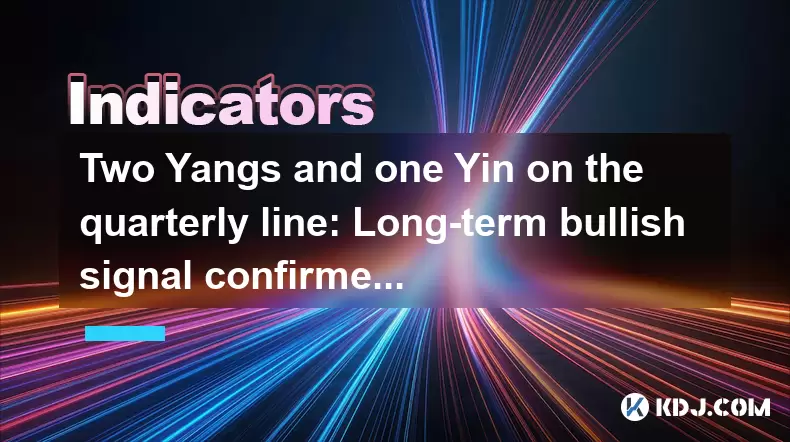
Two Yangs and one Yin on the quarterly line: Long-term bullish signal confirmed?
Jun 12,2025 at 07:00am
Understanding the 'Two Yangs and One Yin' Candlestick PatternIn technical analysis, candlestick patterns play a pivotal role in identifying potential market reversals or continuations. The 'Two Yangs and One Yin' pattern is one such formation that traders often observe on longer timeframes like the quarterly chart. This pattern consists of two bullish (...
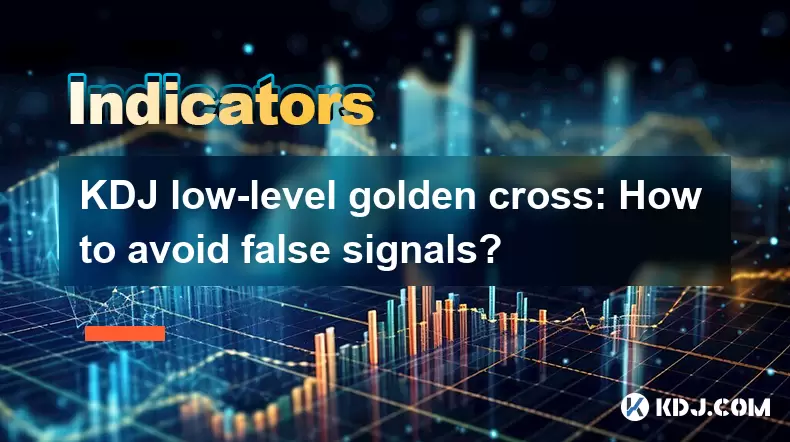
KDJ low-level golden cross: How to avoid false signals?
Jun 12,2025 at 08:21am
Understanding the KDJ IndicatorThe KDJ indicator, also known as the stochastic oscillator, is a momentum-based technical analysis tool widely used in cryptocurrency trading. It consists of three lines: the %K line (fast stochastic), the %D line (slow stochastic), and the %J line (divergence value). These lines oscillate between 0 and 100, helping trader...

Bottom-up volume stagnation: Is it accumulation or heavy selling pressure?
Jun 12,2025 at 01:42pm
What Is Bottom-Up Volume Stagnation?Bottom-up volume stagnation refers to a specific pattern observed in cryptocurrency trading charts where the price of an asset moves sideways or slightly downward, and trading volume remains consistently low over an extended period. This phenomenon is often seen after a sharp price drop or during a prolonged bear mark...
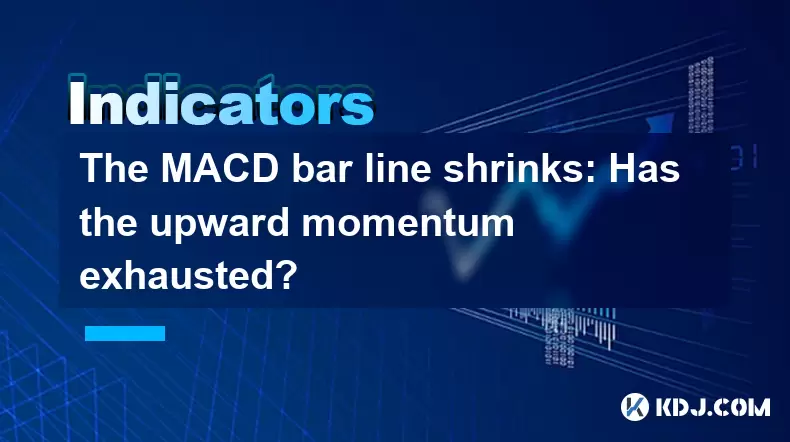
The MACD bar line shrinks: Has the upward momentum exhausted?
Jun 12,2025 at 12:49am
Understanding the MACD Bar LineThe Moving Average Convergence Divergence (MACD) is a widely used technical indicator in cryptocurrency trading. It consists of three main components: the MACD line, the signal line, and the MACD histogram (also known as the bar line). The MACD bar line represents the difference between the MACD line and the signal line. W...

The chip peak moves up: Is the main force quietly shipping?
Jun 12,2025 at 01:01am
Understanding the Chip Peak Movement in Cryptocurrency MiningIn recent years, the chip peak movement has become a critical topic within the cryptocurrency mining community. This phrase typically refers to the point at which mining hardware reaches its maximum efficiency and output capacity. When this peak shifts upward, it often signals changes in the s...
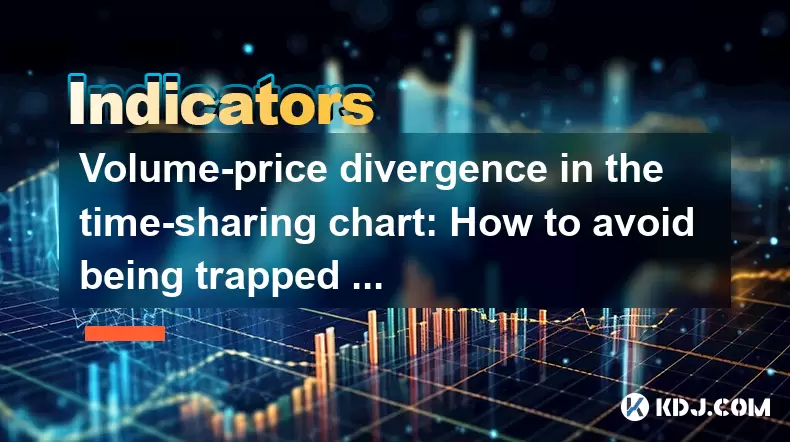
Volume-price divergence in the time-sharing chart: How to avoid being trapped on the same day?
Jun 12,2025 at 07:28pm
Understanding Volume-Price Divergence in Cryptocurrency TradingVolume-price divergence is a critical concept in technical analysis, especially within the fast-moving world of cryptocurrency trading. It refers to a situation where price movement and trading volume move in opposite directions. For instance, if the price of a cryptocurrency is rising while...

Two Yangs and one Yin on the quarterly line: Long-term bullish signal confirmed?
Jun 12,2025 at 07:00am
Understanding the 'Two Yangs and One Yin' Candlestick PatternIn technical analysis, candlestick patterns play a pivotal role in identifying potential market reversals or continuations. The 'Two Yangs and One Yin' pattern is one such formation that traders often observe on longer timeframes like the quarterly chart. This pattern consists of two bullish (...

KDJ low-level golden cross: How to avoid false signals?
Jun 12,2025 at 08:21am
Understanding the KDJ IndicatorThe KDJ indicator, also known as the stochastic oscillator, is a momentum-based technical analysis tool widely used in cryptocurrency trading. It consists of three lines: the %K line (fast stochastic), the %D line (slow stochastic), and the %J line (divergence value). These lines oscillate between 0 and 100, helping trader...

Bottom-up volume stagnation: Is it accumulation or heavy selling pressure?
Jun 12,2025 at 01:42pm
What Is Bottom-Up Volume Stagnation?Bottom-up volume stagnation refers to a specific pattern observed in cryptocurrency trading charts where the price of an asset moves sideways or slightly downward, and trading volume remains consistently low over an extended period. This phenomenon is often seen after a sharp price drop or during a prolonged bear mark...

The MACD bar line shrinks: Has the upward momentum exhausted?
Jun 12,2025 at 12:49am
Understanding the MACD Bar LineThe Moving Average Convergence Divergence (MACD) is a widely used technical indicator in cryptocurrency trading. It consists of three main components: the MACD line, the signal line, and the MACD histogram (also known as the bar line). The MACD bar line represents the difference between the MACD line and the signal line. W...

The chip peak moves up: Is the main force quietly shipping?
Jun 12,2025 at 01:01am
Understanding the Chip Peak Movement in Cryptocurrency MiningIn recent years, the chip peak movement has become a critical topic within the cryptocurrency mining community. This phrase typically refers to the point at which mining hardware reaches its maximum efficiency and output capacity. When this peak shifts upward, it often signals changes in the s...

Volume-price divergence in the time-sharing chart: How to avoid being trapped on the same day?
Jun 12,2025 at 07:28pm
Understanding Volume-Price Divergence in Cryptocurrency TradingVolume-price divergence is a critical concept in technical analysis, especially within the fast-moving world of cryptocurrency trading. It refers to a situation where price movement and trading volume move in opposite directions. For instance, if the price of a cryptocurrency is rising while...
See all articles

























































































